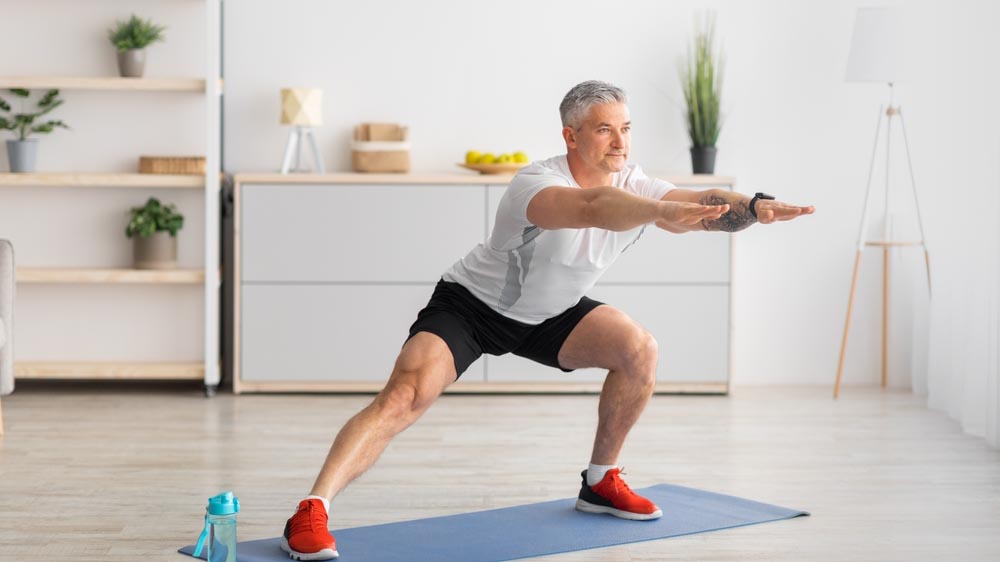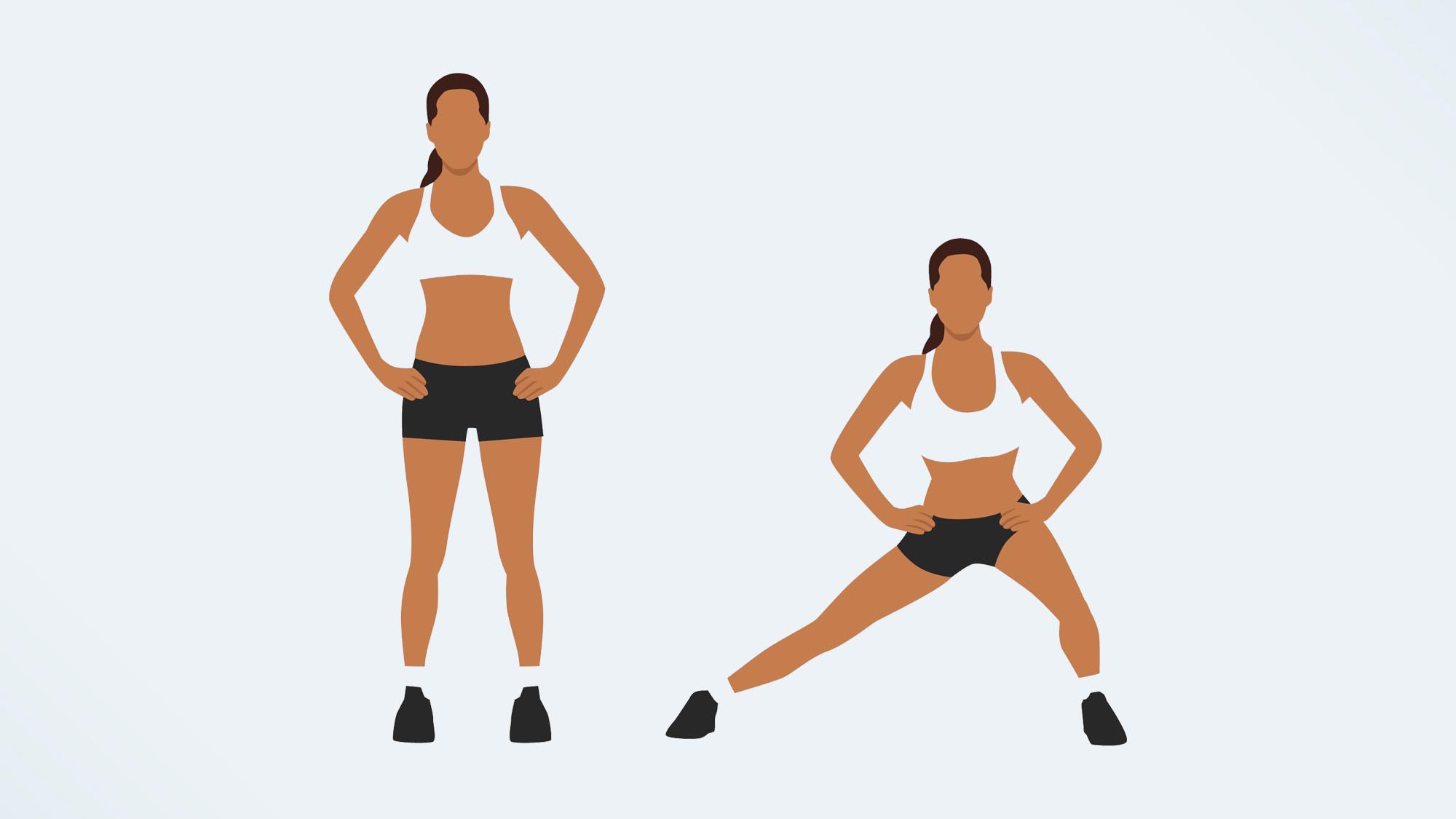I did 30 lateral lunges every day for a week — here’s what happened

If you’ve followed a fitness regime or spent any time in a gym, you’ve probably performed lunges, or at least watched someone else doing them, which is much easier. I do them occasionally, but only the regular forward or backward kind; I had never attempted lateral lunges until this challenge. It became clear on day one that there was a reason for this.
This challenging body-weight exercise is just what it sounds like: a lunge to one side or the other (it’s also called the side lunge). Like the basic lunge, it works multiple muscles at once — the glutes, quads, hamstrings, and calves — but the sideways movement throws instability into the mix and activates the muscles differently, so it helps improve balance. Even if you regularly do forward or backward lunges, you’re going to feel this one in the first few days, especially in your inner thigh muscles (your adductors). It requires no equipment, so you can do it at home, though you’ll need more room than you do for a standard lunge (this may be one reason you don’t see it being performed very often in a gym).
Looking for more workout inspiration? Here's what happened when Tom's Guide asked me to do 50 sumo squats a day for a week, plus when I did 30 supermans a day for a week.
How do you do a lateral lunge?
Begin by standing tall, with your feet no more than hip-width apart. Engage your core to help keep your back straight throughout the movement. Loosely clasp your hands in front of your chest, or place them on your hips, and take a big side step to the left.
Maintaining an upright torso, sink your hips back and lower into the lunge. Ideally, your left leg should eventually be bent at a 90-degree angle, though you may find this is not an option to begin with. You should not feel pain or discomfort, so only lower to a point that is comfortable. Your left knee should be in line with your left foot and should not extend beyond your toes. Your standing leg (the right in this case) should remain straight, though not locked, and your foot firmly on the floor, toes pointing forward.
Now push your left foot into the floor and return smoothly to the starting position. Repeat the move on the other side, or do 10 reps on the left before switching to the right. Aim for three sets.

I did 30 lateral lunges every day for a week and this is what happened
There’s not a lot to think about with this move, but it took me a few attempts to develop decent form. Most of us don’t spend much time moving from side to side, so the move initially felt unnatural. On day one, I felt a pull in my adductors. It’s easy to strain these muscles, so take care as you lower. I noticed a few things straight away: I could lower more smoothly and deeper on my left side than on my right. I also noted that I was bending my supposedly straight leg as I returned to start position. This makes it a little easier to finish the move, but try to avoid it. I opted to do 10 on each side before switching, as I found it easier for developing a rhythm, such as it was. For the rest of the day, I was in no doubt that I had given my leg muscles and glutes a workout.
Get instant access to breaking news, the hottest reviews, great deals and helpful tips.
I was still feeling the effects on day two, but already I was noticing a better flow to my movement. And I didn’t feel the adductor strain, which I took to mean my muscles were stretching out nicely. This was reassuring — and gratifying.
On day three, I was still feeling the move, mostly in my adductors and quads. It was as if I had done an intense stretching session, which I tend to avoid (I’m a runner and lots of runners pretend stretching isn’t a real thing, which is nuts). This exercise was like boot camp for my upper legs and glutes. They weren’t happy to be attending, but they were going to like the results.
Because I was feeling the effects quite intensely – though there was no pain – I took a day off and the following day was a revelation: I was able to go lower on both sides, my form was as good as it was going to get (though I had to keep an eagle eye on my left knee when I was lunging right, as it remained determined to throw in a little bend as I rose). After 30 reps, my muscles shrugged and asked, “Is that all you got?” So I added 10 reps on each side, which shut them up.
I continued to improve for the rest of the week, adding reps and moving easily. If you want to test the usefulness of this move, run up a flight of stairs when you’re done — you’ll bound. Or take note as you get up from a chair. There’ll be no slight lean forward to let momentum work its magic, and you won’t be pushing off with your hands: all the work will come naturally from your pumped-up quads, hamstrings, and glutes. When I went for a run at the end of the week, I noticed my kickback was far more pronounced than usual, and because this is something I have tried to improve, I will be taking time to regularly do side lunges. And I might even start stretching. Or I might not. Hard to tell.
John is a writer and editor based in London. He was worked for magazines such as Runner’s World, Men’s Health, Women’s Health and Cosmopolitan. A keen runner, what he lacks in ability he makes up for with enthusiasm and excuses.

